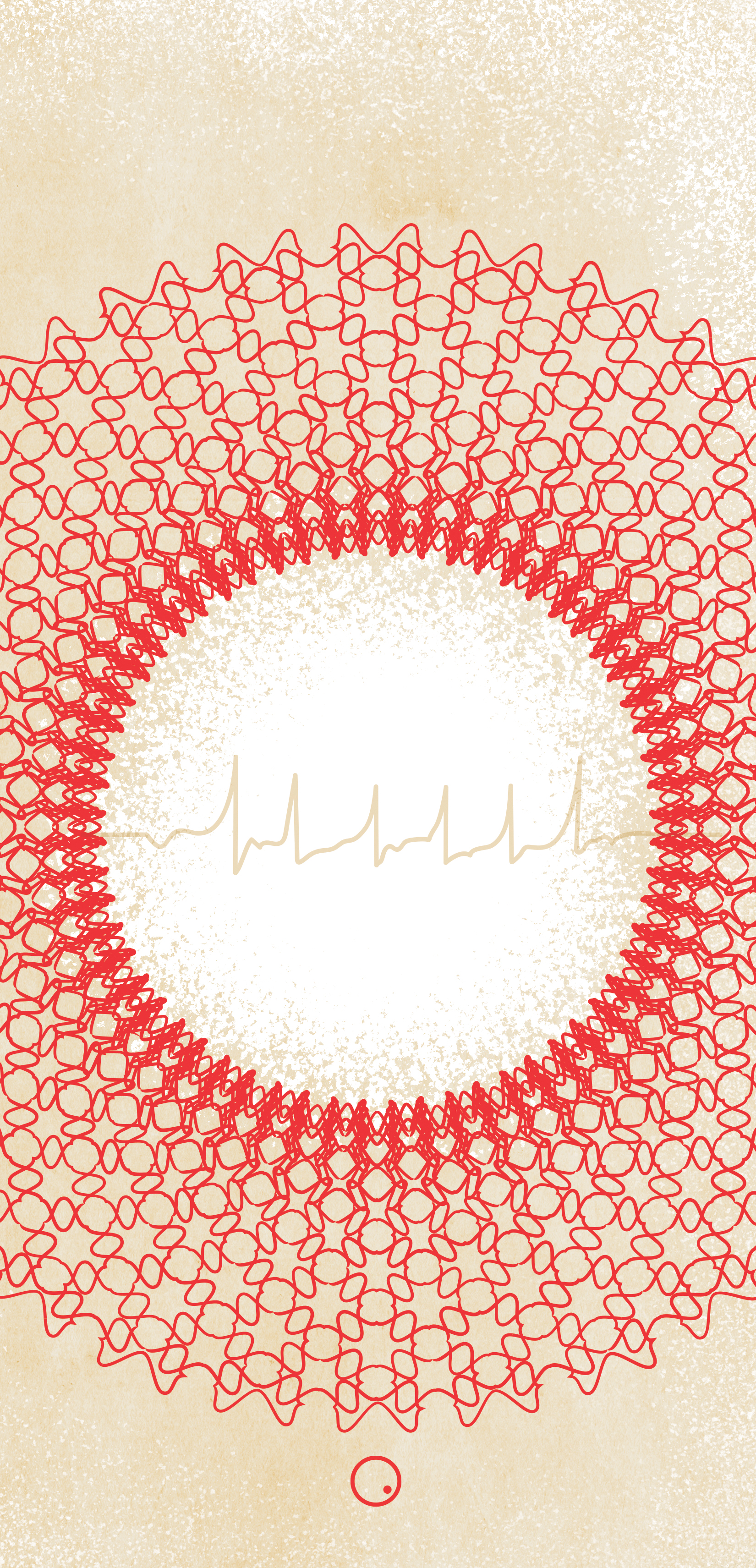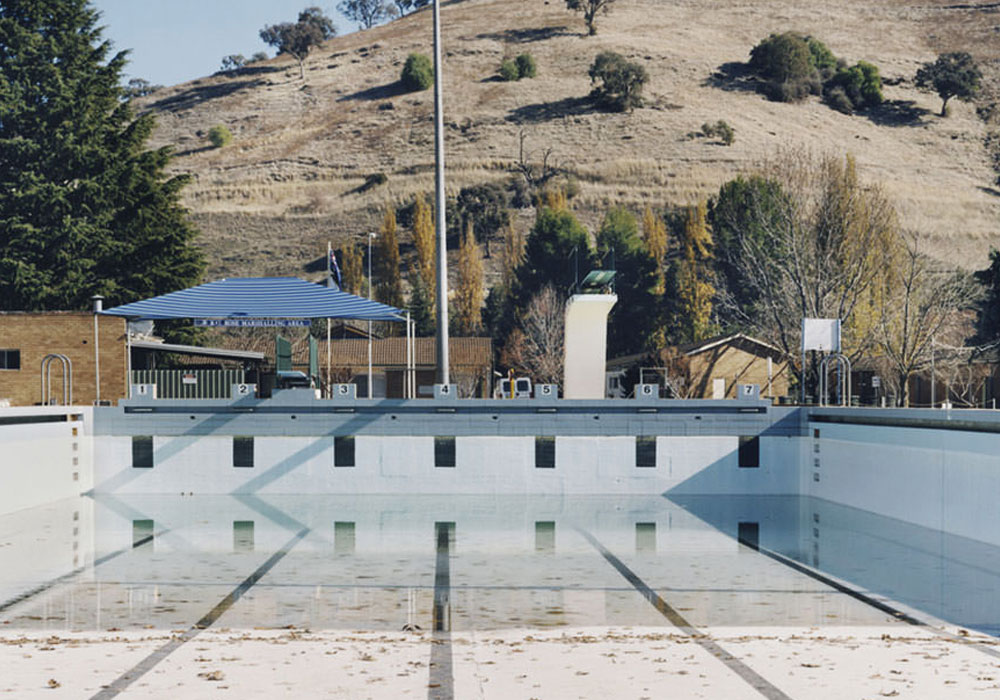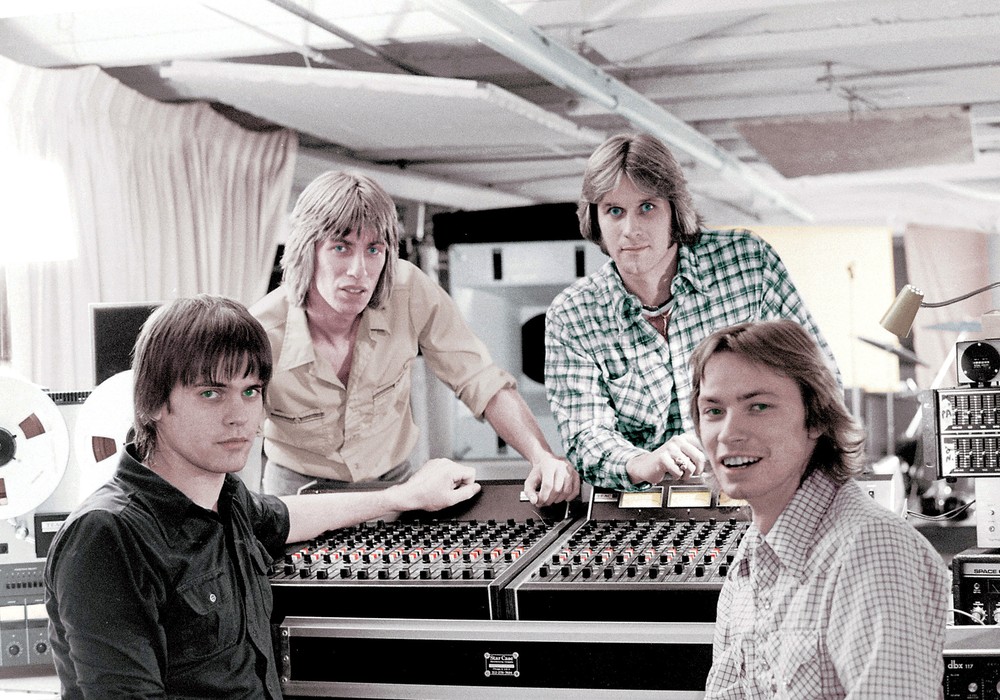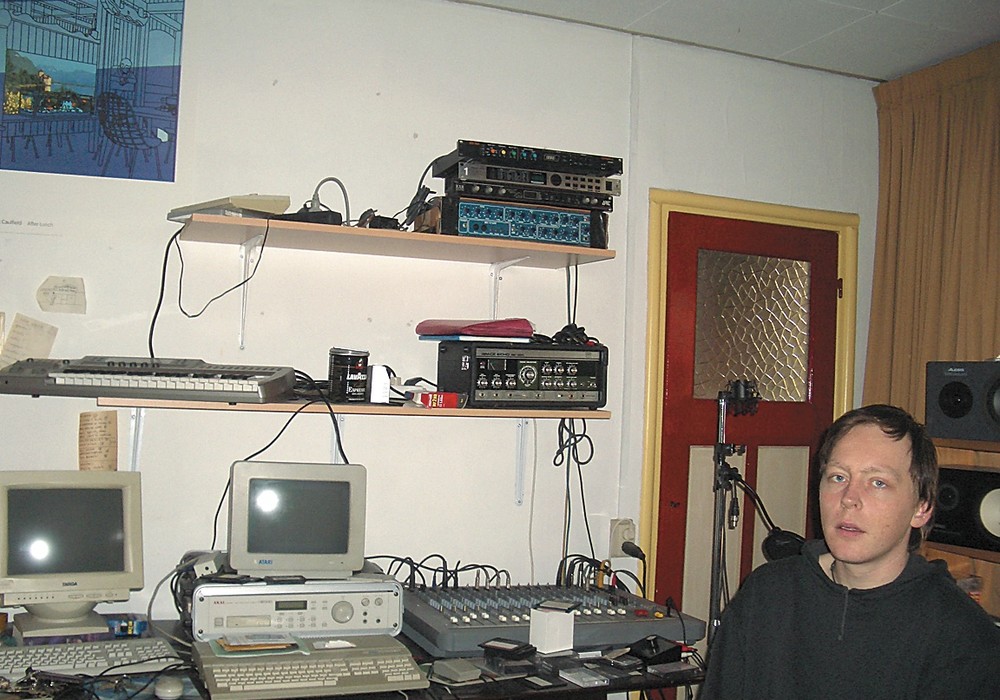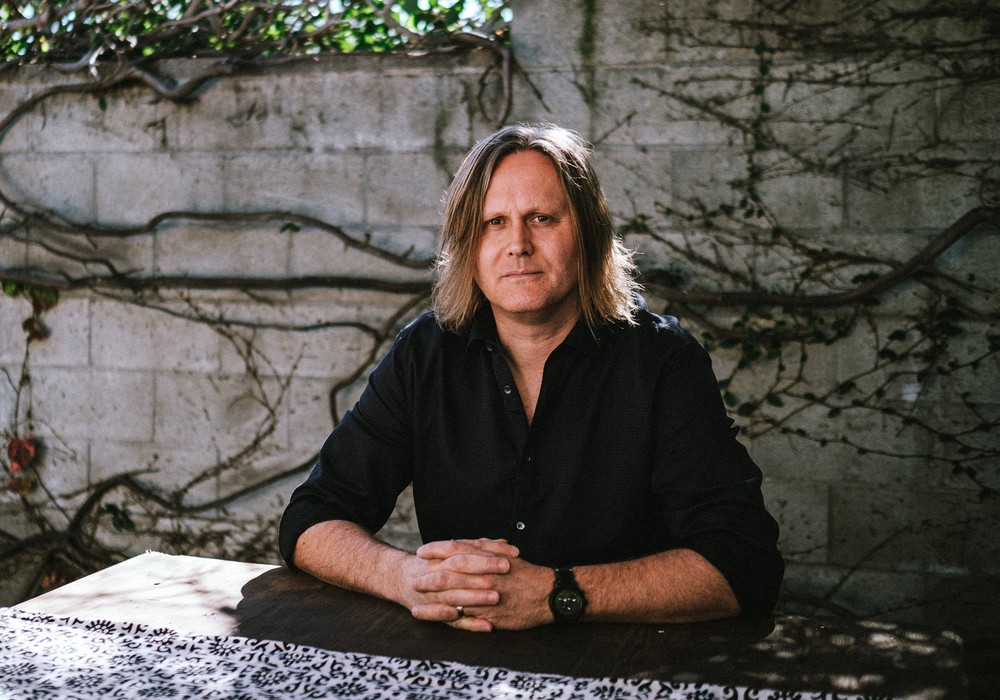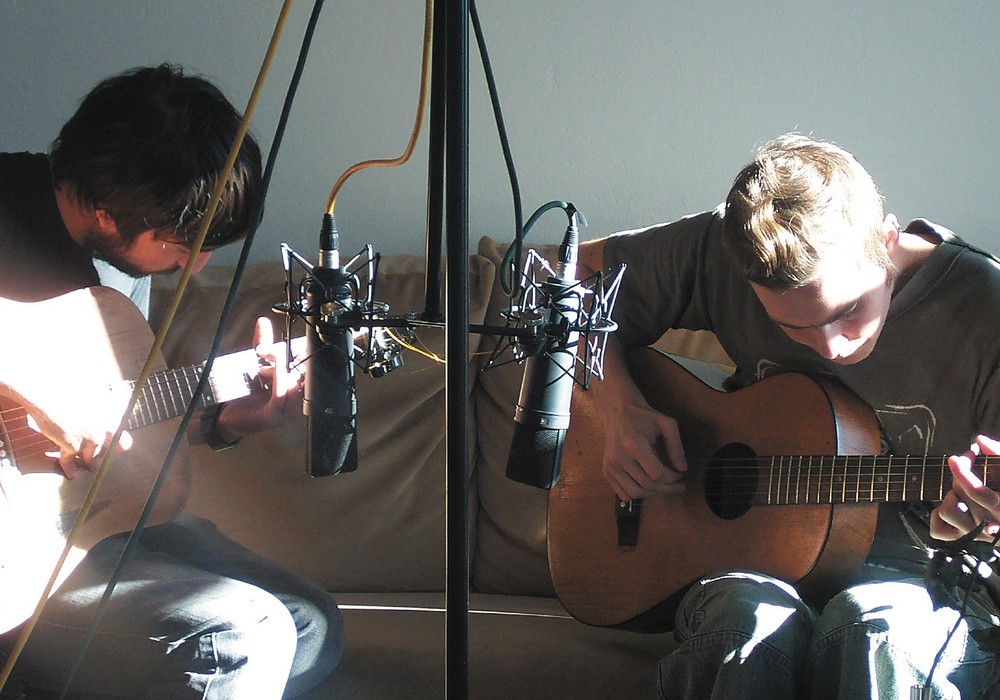Soon after finishing a technical engineering degree, Tom Bugs completed and sold his first batch of Weevils. While working out how to give life to what would become BugBrand, Tom helped out at the Cube, (a co-op run arts space central to Bristol's independent creative community) where the DIY approach is in full swing. Mr Bugs set about applying this way of "doing things" to his own plans. Within a short space of time, BugBrand has produced a fine handful of innovative tone bending devices, from the stompbox-style BugCrushers through the various Weevil incarnations, modular analogue synths and even some the solar powered designs...
So what exactly is the Weevil?
It's gone through a lot of mutations but always the same core, lo-fi square wave oscillators running into quasi ring modulators. There are usually some body contact/physical controller points, and I like making use of power starvation techniques.
How does power starving affect the circuit?
It causes the oscillators to inter-modulate in very strange ways, slightly tameable but with a life of their own. The range of sounds it helps to create out of the simple heart of these circuits is quite amazing.
They're not all stompboxes are they?
No. I began doing Weevils in ornate cigar boxes, very eye catching, and then moved on to more standardised boxes and parts. The PostcardWeevil is the most diminutive member of the family. It's a circuit with three oscillators, two ring modulators and a little amp/speaker built on a 7 x 8 centimetre PCB [printed circuit board] with a 9-volt battery, dials, body contact points and a mini-jack output.
That sounds like fun. Oscillators in your pocket...
Yeah, I love it. It's inspired by the wonderful old Cracklebox from STEIM in Amsterdam. I loved how the Cracklebox was such a beautiful object — a simple but effective little wooden box. It's fun watching people react to the PostcardWeevils — some will switch it on, get confused quite quickly, pull some faces and switch it back off again, while others get sucked in.
I hear you made a couple of sax weevils?
Yes, through doing sound at the Cube and having musicians sleep at our place. Mats Gustafsson and Dror Feiler [well-known musicians from Sweden] heard about the Weevils and got in touch. It was an early project in my development; looking back I see it really as a learning curve. Maybe I bit off more than I could chew. I disassembled a couple of saxes, worked out the mechanical operation of the instrument and fitted pressure points and contact mics to control some special Weevils. There was also a mic for untreated sounds.
That led to the crazier Sonic Dress?
When I took the saxes out to Sweden I met Mat's wife, Lotta Melin — a performance artist and dancer. We discussed the idea of a Sonic Dress, and after a couple of years of talking we got on to making it. There was a contact mic wig made of guitar strings. That thing makes some massive "KKKCSHUFFFFFFFFF" sounds and it looks completely nuts. And there are sensors under the armpits controlling other devices, which I put together and built into the dress with [help from] a costume designer.
And you've been out to Scandinavia doing workshops?
You never really know what to expect with workshops. The last one was left very open as to what I should get people to work on. I wrote a menu of sorts and sent it out to everyone beforehand so they could get an idea of the kind of stuff we could do — basically just to get them thinking. For this one it was important to keep things simple because the participants had not done much electronics. We started with soldering and moved to basic circuits to inspire them. I introduced the ideas and helped the participants try stuff out. They got really into it and everyone at the end had something to take away. Contact mics, oscillators, and amps...
Are you still making contact mics?
I seem to make between 50 and 100 a month at the moment. They were one of the things I began with; really simple, cheap, people are into them and they're really fun to play about with. I'm still playing with them.
The BugCrusher, is it a bit crusher?
No, it's a sample and hold circuit — like a stepped random control in some synths — that runs at audio rates. It kicks out sounds not too far from ring modulation, but with quite a distinct flavour, some great fizzly distortions at hi frequencies while the lower reaches are more murky and intense. It's dressed up in a cute stompbox of course.
How did you go from building little boxes to making modular synthesisers?
Actually the Internet played a large part in me following through on ideas I had. The wealth of information from people that you can access through forums is amazing! Until recently, the modulars have been solely for my own personal music playing and a great way for me to try out new ideas. I've learnt a lot of electronics and mechanical skills through building them.
So BugBrand's advice to those who want to get into audio electronics is "build a modular?"
Well, maybe ease into building modulars! The modular approach is key to many modern systems. Take computer programming: you see modular writing in action — you put the program together using little building blocks. For most applications there's no point in the user rewiring everything at will — you take a synth and fix its architecture so it becomes something quite immediate, an instrument with its own set of limitations that you learn and play around with. Modulars, by their nature, are much slower to get going but their depth is fantastic.
What about your excursions into solar power?
I started with that on the Weevils. Again, it's been another big learning curve. It's only been this past year since I started looking into renewable power. I was involved in a bicycle-powered project for a festival in Cambridge. Thirty of us cycled two miles with dynamos on the bikes that charged up lead acid batteries. We managed to generate enough power to almost boil enough water for one cup of tea! That got me going. I have solar-powered PostcardWeevils and there are panels on the front of the latest modular case. I can put them out in the day, let them sit there storing up energy and when night falls... ah Goldmund.
The Goldmund Festival. I've heard about this...
I performed at this amazing little festival in Germany just outside Berlin called Goldmund, by a lake in the summertime. I'd just changed the modular around a bit and added the solar panels. I set the modular's solar panels out during the day and had them charge. I was playing the dawn set, four till six a.m. Once the modular was warmed up, it just started kicking out these heavy pumping rhythms. I couldn't do anything but ride it. A two-hour "modular" techno set. It was funny. I just did a demo at my place for a Gambian kora player who played at the Cube the other night. He got really excited, this traditional player, and we decided on me going to Gambia with some solar powered amps!
You must have a few clones of yourself locked up in the workshop, burning their fingers on the soldering irons, cutting out the circuit boards?
I have wondered about getting help — it'd be good. It's all constantly evolving. I started making my circuits using Press-n-Peel — you design a circuit, laser-print it on special paper, then you use a clothes iron to re-melt it onto a copper board and then etch it in ferric chloride. Then you drill all the holes in the PCB by hand. Now I have a small scale CNC [computer numerical control] machine that I use to design the circuit, and then the computer-controlled router cuts things out and drills the holes. I can bash out ideas quick and have stuff built in a couple of hours. Though I wouldn't say "No" to a few monkeys that completely understand my way of working!
